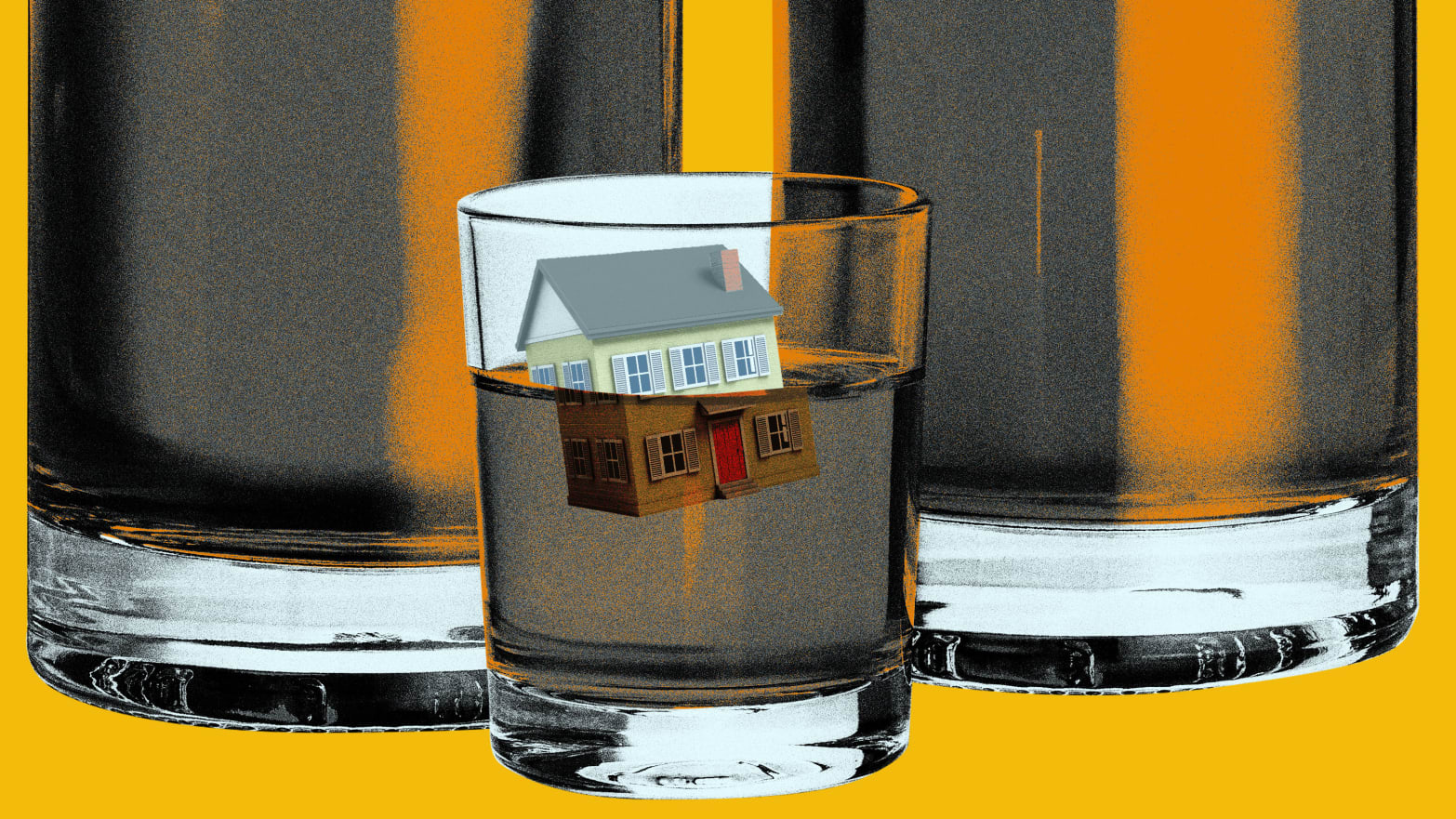I need to get rid of a lot of whiskey. Soon.
I’ve been writing about whiskey since 1996, and you amass a lot of whiskey if you do it that long. To be honest, most of it is samples that companies sent to me in hopes that I’d write about it. Sometimes I did, sometimes I didn’t. I do buy whiskey, but there are a lot of samples. They’re all down in my basement office, in the large built-in cabinets a friend made for me in 2005.
The collection outgrew the cabinets in about six years. There are now boxes of whiskey all over the floor, there are bottles balancing on my bookshelves, and there are more boxes tucked into the little closet under the stairs—wait, no, that stash turns out to be cases of beers that I’m “cellaring.”
There isn’t just whiskey in the basement. There are also bottles in the dining room, the living room, our bedroom, and my son’s bedroom—he moved out, so I put whiskey there. There used to be a lot of whiskey in the kitchen, but we remodeled. There is, however, some whiskey in the pantry, but no one knows about that but me… I think.
There are about 300 full-sized bottles in the basement. Only about 5 percent of them are unopened. It’s not a “collection” in the usual sense, because an opened bottle of whiskey has zero-dollar value to collectors. This is a working collection, a liquid library if you will. These are whiskies I refer to as I write, or just drink as the mood hits me.
Why do I need to get rid of it? My wife retired in August, so we’re packing up to move to our new home in central Pennsylvania. It’s an 1850s three-story house that we’ve been renovating over the past five years in preparation for this day. We love the house, and the small town, and the brewpub at the foot of the hill.
There’s one catch. If you know anything about American houses from that era, you won’t be surprised when I tell you that although this house has more square footage than our current house, it has less storage space. We added a couple closets, and we’re going to be adding built-in shelves for a library, but I’ve been told, firmly, that we won’t be building extra storage space for booze.
Moving companies won’t touch it either. To add to the fun all the whiskey must travel to our new house in a car.
As I go through my hoard some interesting things are coming to light that remind me of what happened during all those years of booze deliveries.
For instance, about eight years ago some rookie writer (or blogger, or influencer; who remembers?) got a great full-size bottle of limited-release whisky... and flipped it on the secondary market. They didn’t realize that the packaging was special for press; useful tagging, as it turned out, because the distiller was furious. Suddenly, almost no one was getting regular-sized bottles anymore, and what we did get came without labels, just tags in the package. Thanks, rook!
The upshot of that is that I have literally hundreds of sample bottles, ranging from 200 ml brain grenades to 10 ml perfume vials, and about a quarter of them are unlabeled. That’s a lot of space, but I came up with a solution: roughly 30 samples make an instant so-called infinity bottle. What’s that? Usually, you pour the last dram of every whiskey you finish into a blending bottle. I’ve got three of them now, just like that; one of them is actually pretty good.
Some of the other unmarked samples went into a few boxes for a friend who calls it “Kentucky roulette.” He happily pours with no idea of what it is, and then sips with great enjoyment. I like his attitude.
Full-sized bottles are more fun, but some of them are just a pain. Most whiskies come in various familiar median-sized bottles: think Jim Beam, Johnnie Walker, Bushmills. Some are shorter and fatter —Redbreast, Weller, Old Pulteney—some are a bit taller—Glenlivet, Jameson—but they’re almost all conveniently similar.
But some just have to be different. They’re overly tall, like Angel’s Envy, Forty Creek, or the Buffalo Trace Antique Collection. Or they’re too damned short and broad: looking at you, Old Forester Birthday Bourbon. They don’t fit in a box, or on a shelf; prima donnas that have to be on display because they can’t be put away. I know how to fix them: I’m gonna drink ‘em. Ha!
The presentation boxes are all going away. The hinged Viking longship cases of the Highland Park Valhalla Collection? Set ‘em on fire and push them off into the lake. Stacks of wooden display stands? Skeet shooting. Booker’s Bourbon boxes? My niece repurposed them as centerpieces for her wedding last month, like little boozy window boxes.
Packing up I can also track swings in whiskey creation trends. Almost all the bottles I have from the 1990s have age statements: 6, 10, 15, 25-year-olds. Then as the demand increased, stocks got tight and age statements slowly disappeared. There are plenty of labels that look almost like the old ones but with just no number. A few have a number but are nonchalantly missing the “years old” part that usually goes with an age; like just a mysterious “12.” And then some of the most recent additions have returned to the birthday parade as stock has finally caught up with demand.
Evolution is… well… it’s often ugly. That’s how I wound up with some remnants of the Shitty Craft Whiskey from The Dawn of Time. Only remnants, though, because I gave away a lot of bottles with about one ounce missing between 2005 and 2018. I’d taste them and spit, then box up six to 10 samples and send them to work with my wife. She’d set them on her desk on Friday morning, and co-workers usually grabbed them all by lunch.
I’d like to take this moment to apologize to all of her colleagues, but you know, that’s what cola is for. Same thing goes for all the flavored whiskies. I feel like I deserve an apology myself for those.
Happily, craft whiskey is a lot better these days, but I’m still giving it away. I’m giving away at least five boxes of whiskey before the move, which means I’ve been doing triage. Every bottle gets a status: keep, finish, or give away. I don’t have room to keep all the good bottles, or even the great ones, so some lucky folks are going to get some very good booze.
But these bottles come with a price. Not money; that’s illegal, and pretty unethical, too, considering it was all given to me as samples. No, if you get a bottle of something good, you have to take two bottles that are...not as good. Consider it an education. You’ll also get some glasses, because I have a lot of glassware to give away, too.
After I pack up everything, then I’ve got the whole thing to do over again with the 300 bottles I already have at the new house. That should make us some friends in the new neighborhood!

